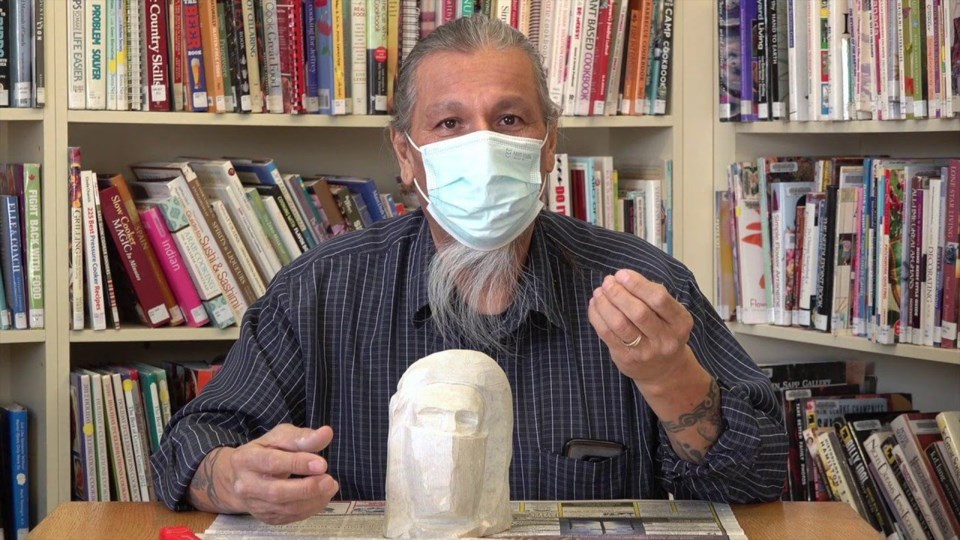PRINCE ALBERT - February has been declared Aboriginal Storytelling Month in Saskatchewan and to celebrate, the Library Services for Saskatchewan Aboriginal Peoples (LSSAP) has a lineup of 72 Indigenous storytellers ready to share their own tales.
This is being done through the Saskatchewan Aboriginal Storytelling Project, and will involve local community libraries and schools. The project has been running for 19 years, and is run by a committee of Indigenous librarians working across the province.
The month-long event kicks off February 1 with storytellers from across Saskatchewan sharing poetry readings, stories for children, cooking classes, musical performances and cultural teachings.
Coordinator Jessica Generoux said storytelling is a great way to bridge cultural gaps.
“For Indigenous people, it is a time of cultural and language revitalization,” she said. “There is a history of Indian Residential School in the past where that really impacted the Indigenous identity and that has developed intergenerationally in language and culture loss.”
Generoux added that there is a great deal of healing occurring, and storytelling helps.
“It's one of the main modes of cultural knowledge transfer and it's an important part of being an Indigenous person,” she explained. “Storytelling is really ingrained in a way of life and a way of thinking—as a Cree person, a Dakota person, a Metis person. A lot of the cultural knowledge is shared, learned and maintained.
“Storytelling is a very old custom too, especially with Indigenous people. Most of our Indigenous communities in Saskatchewan are oral based, so their history is shared through oral storytelling.”
Generoux said storytelling benefits everyone, not just Indigenous people. She said it helps with language acquisition and cultural revitalization, and brings people of different cultures closer together.
“We are all treaty people,” she explained. “We all share the same history and we all share the same cultural landscape and space together. Sharing this custom and learning together is an act of reconciliation.”
One of the artists taking part is sculptor and Darwin Atcheynum. He shares tales of Mother Nature and Grandfather Rock to eager students using his own stone sculptures.
He learned to become a storyteller by hearing stories while working on art with elders.
“(It’s) one of the things that was we used to do when we were doing artwork,” he said. “When I was a kid, there was always storytelling.”
The stories would give the art they were working on meaning. It also helped them earn income during difficult times.
The thing is in our culture we never had books or anything so everything was passed down orally,” he explained. “All my stories I try and pass on through my artwork. For example, there will be stories in the past about what happens here and there and also cultural stories.”
Atcheynum tries to write a story to go with each sculpture he works on. He recently completed 1,000 separate stories in a few months.
He came to be an oral storyteller by sharing his art at schools.
“I didn't even consider myself a storyteller until I went to the schools showing my art and then I started telling my stories,” he explained. “It went on from there until people started calling to have me tell stories.”
Holding the event virtually has helped participation grow. Despite losing some aspects of intimacy because of the format, Generoux said they have seen numbers steadily increase. In the last year before the pandemic they had 15,000 people participate. In the first year they held events during the pandemic, they reported more than 30,000.
“It doubled and then this year we are expecting it to triple because we have just so much knowledge of running virtually now,” Generoux explained.
She added that Zoom can hold up to 100 classrooms at once. As they learned how to work remotely the program improved.
“We have to get these programs out there because there is a really huge cultural impact,” she said. “We are finding that this year there is a big emotional impact too.”
Generoux said they hope to inspire everyone, but their biggest group that takes part is elementary students.
“That's our target,” she said. “We are working towards that every year and we are catering to that. Everything else kind of comes secondary.
“We feel that we really can get the most educational impact connecting storytellers to libraries in schools to children, to families,” she added
There are more than 90 events happening both in-person and online. From poetry readings to cooking classes, stories for children and sacred teachings, you can find it all this month.
One event that is open to the public is a virtual workshop on Saturday, Feb. 5 at 1 p.m. through Zoom with storyteller Janie Windolph.
“She is bringing together a really exciting agenda,” Generoux said. “There is really a lot of good information shared and we will have really informative topics to touch upon about storytelling and how to become part of it, and then, going deeper into becoming a storyteller yourself and seeking for information and family history and that sort of thing.”
Aboriginal Storytelling Month 2022 is about making Indigenous culture accessible, through libraries, to everyone no matter where they live with online channels like Facebook, Zoom and other websites.
With most libraries across Saskatchewan taking part in the event, there is truly something for everyone. You can find a full schedule for the month on the LSSAP website lssap.ca




